
Dear Members (a note from Deb Hickey):
The number of heartfelt emails we received following last month’s newsletter – and my father’s opening memo about his brother’s recent passing – was overwhelming. Some even asked for his home address and sent cards in the mail.
I forwarded all the messages to my dad. A couple days later, he called and said, “I’m really surprised that so many people took the time to send such thoughtful emails.” I replied, “I’m not.”
I don’t think my father will ever fully comprehend the impact he’s had on so many and how much people appreciate him. Yes, he started this group – because of the pure goodness in his heart – to keep a few fellow patients connected after treatment. And then it grew and grew, and he soon found himself awake at 3 a.m. talking to a guy in China about his rising PSA or a man in Australia about his pathology slides. And if Dad wasn’t waking up at all hours to make himself available to foreign strangers, he’d be spending his dinnertime giving counsel to a guy in New Jersey who got his phone number from his cousin’s best friend’s brother-in-law.
Then he wrote a book with the sole purpose of helping others so they wouldn’t have to spend three agonizing months researching treatment options like he did.
Then he wrote another book when he felt the first one was outdated. And, of course, he’s never written a newsletter that wasn’t thoroughly researched and fewer than 20 pages. He’s always behind more than 2,000 emails, and still, he finds a way to answer each one of them.
Dad is the epitome of selflessness.
From the both of us – thank you for your kind messages. Below are excerpts from a few of my favorites.
Your tribute to your big brother was very touching. I’m sure you miss him daily, but how wonderful to have had such a mentor, friend, and confidant over so many years.
When Tennyson said, “It’s better to have loved and lost than never to have loved at all,” I used to think it was only about romantic love. But as I grow older, and especially in reading how close you were with Gene, I understand it’s about loving relationships, the pain of knowing for sure that you wouldn’t trade the love despite the pain and sorrow of the inevitable goodbye.
Dear Bob: I don’t know you personally, but I respect you immensely. I didn’t know your “big brother” Gene, but after reading your heartfelt memories, I can visualize what a great person and brother he was. You were fortunate to have each other.
Thank you for all you do for us prostate cancer survivors and to those seeking advice on treatment. Also, please give my regards to your remarkable daughter, Deb, who I’ve communicated with in the past. You make a great father/daughter team. I’ll be the first to nominate you both for the “Prostate Cancer Hall of Fame.” I was going to add “LOL” after that, but I’m serious. If ever there’s such an award, your names should be at the top of the nominations list.
My thanks to Bob for his tribute to his brother. I’m indebted to Bob for introducing me to proton therapy. I don’t remember how I learned of him – it certainly wasn’t through my local doctor who favored seeds.
Bob, like your description of Gene, you’re like a prostate cancer “Big Brother” for thousands of us. We appreciate your candidness and support through the Proton BOB network.
Bob, I’m so sorry for the loss of your brother. It sounds like he was a wonderful, smart, intelligent, kind, loving fellow.
I enjoy reading the newsletters. I commend your daughter for all the hours of time she puts into producing them! May God continue to bless you all!
This month we report on the potential advantages of combining the PSMA PET and MRI to better detect cancerous tumors. We tell you about a popular breakfast food that’s associated with a higher risk of “lethal” prostate cancer. In our “Flashback” section, you’ll learn why you may want to increase your consumption of parsley and spinach. We also include several member responses to last month’s newsletter article titled, “Gleason Score 6 – Not Cancer?” And finally, we let you know why it’s never too late to develop new health habits, and we give you five simple examples of how to start today.
As always, we love to get feedback on the newsletter, and welcome any suggestions you have on how to improve the value of the BOB Tales to our members. Just send an email to [email protected].
Deb Hickey
To print the BOB Tales newsletter or view the newsletter with a larger font size, click here for the PDF file. .jpg)
.jpg)
In This Issue:
- PSMA PET and MRI: Future Power Couple?
- Breakfast Food Linked to ‘Lethal’ Prostate Cancer
- Parsley and Spinach: Who Knew?
- Member Feedback: Gleason Score 6 – Not Cancer?
- Five Steps to Improve Your Health
PSMA PET and MRI: Future Power Couple?
PSMA: Prostate-specific membrane antigen is a protein that can be found on the surface of all prostate gland cells, but is found in higher amounts in cells that have prostate cancer.
PSMA PET Scan: A PSMA positron emission tomography scan uses a radioactive tracer, called 68Ga-PSMA-11, that includes a molecule that attaches to PSMA proteins, making it easier for doctors to pinpoint their exact locations. The PSMA PET scan is typically used to detect and stage aggressive prostate cancers and evaluate distant disease.
MRI: Magnetic resonance imaging is a medical technique that uses a magnet and computer-generated radio waves to create detailed pictures of organs and soft tissues in the body. It’s a valuable tool to detect cancer that may not be found via biopsy.
The PSMA PET scan and MRI have proven their worth individually in the diagnosis and treatment of prostate cancer, but each has limitations. Some researchers wonder if marrying the PSMA and MRI might optimize their imaging use while limiting the need for invasive biopsies.
Potential Advantages
No imaging technique delivers perfect specificity and sensitivity. Nonetheless, because PSMA and MRI provide complementary information, integrating them may have the potential to find more cancerous cells than either technology alone. Furthermore, using PSMA/MRI could not only improve a physician’s ability to identify and characterize cancerous tumors within the prostate, but also play a critical role in risk stratification for patients and treatment decision-making, according to Jonathan Coleman, MD, professor and surgeon in the Department of Surgery/Urology, Memorial Sloan Kettering Cancer Center, Weill Cornell Medical Center, New York, NY.
Evidence Needed
While some researchers believe combining these two technologies could be the future power couple of prostate cancer diagnosis, they’ll need definitive clinical trials to prove it. The challenge will be in establishing clinical pathways that allow doctors to rely on the accuracy of these tests and understand how to best incorporate them into practice.
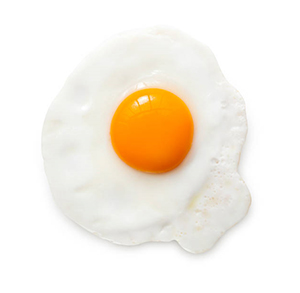 Breakfast Food Linked to 'Lethal' Prostate Cancer
Breakfast Food Linked to 'Lethal' Prostate Cancer
A study published in the journal Cancer Prevention Research associates egg consumption with a significantly higher risk of “lethal” prostate cancer.
According to researchers, healthy men who consumed 2.5 or more eggs per week had an 81 percent increased risk of aggressive prostate cancer compared with men who consumed fewer than 0.5 eggs per week. They presume this is due to high levels of cholesterol and choline found in eggs. Cholesterol and choline are also highly concentrated in prostate cancer cells.
Researchers found that men in the highest quintile of choline intake specifically (471 mg/day) had a 70 percent increased risk of lethal prostate cancer. Although animal foods are typically rich in choline, it’s even more concentrated in egg yolks.
Though the causation has not been confirmed and there are studies supporting both sides, a meta-analysis showed an elevated risk for not only prostate cancer but also breast and ovarian cancers for those with the highest intake of eggs as compared to those who consumed no eggs.
►BOB Comment: We wrote about this topic in our “How Not to Die” series back in March. In the chapter, “How Not to Die from Prostate Cancer,” Dr. Michael Greger cited a Harvard University paper titled, “Choline Intake and Risk of Lethal Prostate Cancer,” which reported that men who consume high levels of choline in foods, such as eggs, have a higher risk of dying from prostate cancer.
We’ve been producing BOB Tales newsletters for more than 20 years. During this time there have been articles that many new members haven’t seen, and some older members may have forgotten. So, we periodically re-run articles from past newsletters. The following is from March 2007.
 Parsley and Spinach: Who Knew?
Parsley and Spinach: Who Knew?
Parsley for Your Prostate
You might think of it as strictly garnish, but research shows that parsley may deserve higher billing on your plate. This little green edible is rich in apigenin, a type of flavonoid that appears to help put prostate cancer cells into slow-growth mode in lab studies. So, pull that parsley off the edge of your platter and give it a nibble. Still consider it rabbit food?
There are dozens of kinds of flavonoids – in fact, they’re divided into six main subclasses that are hard to keep straight without a degree in biochemistry. The subclasses have names like flavonols, flavones, and flavanones. And the subclasses each contain more tongue-twisters like luteolin, quercetin, cyanidin, and apigenin.
Luckily, you don’t have to remember all that. Just remember to eat lots of fruits and vegetables, because these health-promoting compounds are found almost exclusively in produce. You’ll also find them in a few beverages, such as tea, wine, and beer. And in chocolate, the main ingredient – cacao beans – is derived from plants.
So save yourself the science lesson and simply seek out five servings of colorful vegetables and four servings of colorful fruits every day. It’s the simplest way to get your fill of these anticancer, anti-inflammation, antiviral, antioxidant goodies.
Spinach for Your Brain
Keeping your car tuned and your silver polished is pretty straightforward. To buff up your brain? Spinach. Leafy greens help slow the rate at which people's minds naturally lose their edge due to aging. Eat three or more servings of these veggies each day and you'll slow mental decline by as much as 40 percent. Spelled out another way: Eating leafy greens can make your brain function more like the brain of someone who’s five years younger!
Like everything else, brain function declines with age – unless you do something about it. Staying physically and mentally active helps preserve brainpower, and so can the foods you eat, if you make the right choices. In a study of people, age 65 and older, leafy greens (spinach, kale, collard greens, lettuce) were declared the hands-down produce winners when it came to preserving brain function. Also near the top of the list were zucchini, squash, eggplant, and broccoli.
Member Feedback: Gleason Score 6 — Not Cancer?
In every newsletter we ask for reader feedback and we’re genuinely pleased to receive it. Last month, in addition to the deluge of messages we received in response to Bob’s opening memo about the passing of his brother, we received lots of comments on the news story titled, “Gleason Score 6 – Not Cancer?” It appears that most of us are on the same page. Several excerpts are below.
Good articles. I also disagree with Dr. Scott Eggener’s assertion that Gleason 6 be reclassified and no longer be called cancer. You can’t be a little bit pregnant, nor can you have a little bit of cancer that is not called cancer. You are either pregnant or not. There’s no in between. You either have cancer or you don’t. There’s no gray area.
I have personal experience with at least three men who were undergoing a structured active surveillance program at UCLA. Over a period of several years, these men progressed from a Gleason 6 to a Gleason 3 + 4 and in one case, a Gleason 4 + 3. To not classify Gleason 6 as cancer is ludicrous and does a disservice to the many men with that grade of disease who will eventually progress to a more aggressive variant.
─BOB Member, Morro Bay, CA
People need to understand cancer is a spectrum of a disease. There’s low-grade and there’s high-grade. Pretty simple.
─BOB Member, Bonita Springs, FL
Your September issue was outstanding, as always. I just wanted to chime in on your thoughts about the article, “Gleason 6 – Not Cancer?” I think some are worried about instilling fear in people and over-treatment, but a competent urologist should be able to give his patient advice based on their particular staging, their age, their family history, their lifestyle habits, their PSA progression, etc. The fact is, Gleason 6 has the ability to grow within and beyond the prostate and invade tissues. You may not need treatment right away, and if so, you should undergo active surveillance which includes regular monitoring. I’d hate to see people diagnosed with Gleason 6 cancer only to walk back out the door thinking they’re fine.
─BOB Member, Stamford, CT
Why not call Gleason 6 “pre” cancer? That way, men know to be aware – to monitor the situation – rather than panic and jump to needless treatments. I fear getting rid of the word “cancer” altogether would have detrimental results.
─BOB Member, Brentwood, TN

Bold New Therapy for Treating Metastatic Prostate Cancer
We first wrote about a new and incredibly powerful cancer fighting therapy called theranostics at Loma Linda University Cancer Center in our May 2021 issue with a follow-up article in our Dec. 2021/Jan. 2022 issue.
What is it?
In our May issue, Mark Reeves, MD, PhD, Cancer Center Director at Loma Linda University Health, wrote in a contributing article, “Theranostics is an emerging field that combines molecular therapies (therapy) and paired molecular targeted imaging (diagnostics). In oncology, a molecule that binds to a tumor is first used to image the cancer, and then that same molecule is used to destroy the cancer. This approach is being used to transform many fields in medicine, especially neurosciences and oncology. It has the promise of moving oncology from ‘trial-and-error medicine’ to ‘precision medicine.’”
Simply stated, after locating and identifying cancerous lesions through molecular imaging, theranostics involves a simple IV injection that delivers targeted treatment directly to where it’s needed. And because theranostics is so precise, there are fewer side effects.
Bringing Theranostics to Loma Linda
LLUCC is collaborating with BAMF Health to establish a theranostics research and treatment center. Over the next five years, they’ll make a significant investment to exponentially expand access to leading-edge diagnostics and treatment to improve patient outcomes, with a particular emphasis in precision medicine.
LLUCC plans to focus on cancer research to improve prevention, diagnosis, and treatment regionally and nationally. This will be accomplished through expanding their capacity to continually support cancer treatment advancements and further develop their unique cancer research programs such as molecular imaging and therapeutics, cancer health disparities, and particle therapy.
Although a small number of LLUCC patients are already being treated with the technology in their nuclear medicine department, and the results are far beyond encouraging (90 percent of patients with Stage IV neuroendocrine tumors are cancer free), clinical trials are being planned along with the construction of the theranostics research and treatment center. But in order to do this, funding is critical as they’re literally racing against the clock to save lives.
LLUCC philanthropic investments are essential to expand their lab, research, and treatment space, obtain additional equipment critical to expanding new discoveries and care, and establish vital endowments and funds that will provide pathways to treat more forms of cancer and other diseases.
At this time, LLUCC is encouraging gifts to go toward “Advancing Cancer Care and Research,” which provides flexibility in applying resources to where they’re needed most in research development (researchers, labs, equipment, treatment, etc.) and/or capital (new research building).
Email Judy Chatigny at [email protected] to learn more about this revolutionary new technology and how you can help.
Next month, we’ll tell you how one of our members is supporting this effort in a major way.

Giving Options
|
|
|
.jpg)

Five Steps to Improve Your Health
And, it’s never too late. You can start at any age. That’s the message from Johns Hopkins Medicine.
Argye Hillis, MD, the director of the cerebrovascular division at Johns Hopkins says there’s not much difference between an 18-year-old brain and a 100-year-old brain. So, he says it’s never too late to start developing new health habits, such as quitting smoking, improving your diet, getting regular exercise and maintaining a healthy weight.
At Johns Hopkins, a study of 6,000 people ages 44 to 84 who did these things over a seven-year period, showed marked health improvement by several measures. Just a couple of examples: they decreased their risk of death during the time period by 80 percent and they markedly slowed the aging process, inside and out.
1. Exercise
Being more active “lowers your risk of heart disease, type 2 diabetes, high blood pressure, and some cancers, and that powerful effect leads to something experts call ‘compression of morbidity:’” People live longer, healthier lives and tend not to spend their later years battling chronic illness.
The article further states that “Exercise is also one of the best things you can do to help prevent dementia and other cognitive changes.” Assuming your doctor agrees, you should shoot for a minimum of 30 minutes of physical activity every day.
Figure out which form of exercise meets your needs. Bob Marckini swims three miles a week. You might find that long walks, a gym membership, or gardening work best for you.
2. Diet
To help your cells function better, Dr. Hillis recommends the Mediterranean Diet, which is high in vegetables, fruits, whole grains, olive oil and fish, and low in processed foods, meat and sugar.
Other reputable studies promote vegetarian or vegan diets, which are also high in fruits, vegetables, whole grains, legumes, and omega-3 oils, but eliminate meats and fish.
3. Sleep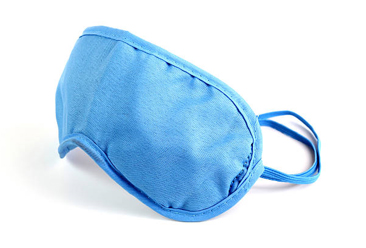
Adequate, quality sleep helps your memory, emotions, weight, and even your appearance, according to the article. As we get older, sleep is often more difficult. Nevertheless, we still need the same number of hours of sleep.
The National Sleep Foundation has found that snoring, medications, underlying medical conditions, and prostate problems, such as BPH contribute to poor quality sleep. Johns Hopkins recommends talking with your doctor and, also consider “creating a calming space, dedicating enough time for sleep and practicing relaxation techniques.”
4. Stop Smoking
This one is so obvious. But it’s surprising how many people are still addicted to cigarettes and fill their lungs with poison many times a day. The hospitals are full of people like this.
Johns Hopkins researchers tell us that quitting smoking will decrease middle-aged smokers’ risk of dying by almost half. And the benefits begin within 24 hours of quitting. There are numerous smoking-cessation programs out there. The right program for you can save your life.
5. Challenge Your Brain
Johns Hopkins says, “Whether it’s learning a language or driving a new route to work, your brain loves tackling fresh tasks. Make it a goal to keep learning as you age.” You might also consider crossword puzzles, Sudoku, jigsaw puzzles, and other games that rely on logic, math, word, and visuospatial skills.

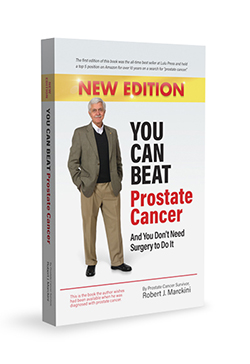 You Can Beat Prostate Cancer: And You Don’t Need Surgery to Do It –Second Edition
You Can Beat Prostate Cancer: And You Don’t Need Surgery to Do It –Second Edition
No. 1 on Amazon
As of this writing, the book is in the No. 1 position on a general search for “prostate cancer” as well as a search in the “books” category. The new book already has 171 reader reviews, almost all 5-star. Following is a recent review:

A Must Read for Prostate Cancer Research: When I was first diagnosed with prostate cancer, my urologist wanted to remove my prostate. I balked at this knee jerk suggestion. My urologist told me to go home and do my own research and decide on my own treatment. That left me with the internet and much confusion. Fortunately, I found and read Robert J. Marckini's book. This book cleared all my confusion and directed me to what I feel is the best treatment available. My urologist knew nothing of proton therapy treatment. Please, if you are looking for answers, read this book.
10 Steps
For the past 10 months we’ve been reviewing Chapter 18 from Bob’s book which outlines the 10 Steps he recommends for taking control of the detection and treatment of your prostate cancer. Now that we’ve complete that review, here is a summary of those 10 steps as shown at the end of the chapter.
Summary
Someone once asked me, “What do you call the guy who graduated at the bottom of his class in medical school?” I said, “I don’t know; what do they call him?” The answer, “Doctor.”
Not all doctors are created equally. Even some very intelligent doctors can be one-dimensional. They may have great diagnostic skills in certain areas of medicine and be quite uninformed in others. Many diseases and health disorders have obvious, telltale signs that any doctor can easily identify. Prostate cancer is not one of them.
The best doctors may not be in your community. You owe it to yourself to choose the best family doctor and urologist you can find, even if it means traveling some distance to see them.
Monitoring your own PSA and having an annual DRE will greatly increase your chances of finding the cancer at an early – and thus treatable – stage. The combination of these measurements gives you three tools:
1. Absolute PSA number. The top half of the range (2 – 4) is a caution sign. A reading over 4.0 is a red flag.
2. A rise in PSA of 0.75 or greater in one year is also a red flag, even if it is within the normal range.
3. The presence of a lump, hardness, or other abnormality by DRE is another warning signal.
Doing advanced MRI imaging (3T mp-MRI) and having a biopsy should be discussed with your urologist if:
A. Your PSA is over 4.0, you’ve ruled out infection as the cause, and a Free-PSA test indicates the probability of cancer, or
B. Your PSA is in the 2 to 4 range, you have family history of prostate cancer, and free-PSA suggests the probability of cancer, or
C. Your PSA rises 0.75 units or more in one year (even within the normal range) and you’ve ruled out lab error or infection, or
D. The DRE test detects a lump or hardness in the prostate (regardless of whether PSA is rising or is elevated).
If you and your urologist decide to do a biopsy, consider doing an MRI fusion-guided biopsy or real-time, in-bore MRI-guided biopsy with a minimum of 12 samples, six from each lobe. With early-stage prostate cancer, the more samples the easier it is to find.
Ask your doctor for local anesthesia to eliminate the discomfort of the test. He or she can’t feel the pain and discomfort – why should you?
If you’re diagnosed with prostate cancer, educate yourself on all treatment options. Several books are referenced in the appendix. Explore the Internet. Attend support group meetings in your community. Above all, interview prostate cancer patients who have completed the treatments you are considering.
Choose the best option for you. And choose from among the best doctors and treatment facilities. This may involve some travel and temporary inconvenience.
Finally, remember that your immune system plays an important role in your body’s ability to fight off the growth or spread of cancer, before and after treatment. Give your immune system every possible chance to do its job. Eat a healthy diet; maintain proper body weight; exercise regularly; i.e. take whatever steps are necessary to maintain or improve your physical and mental health.
Prostate cancer is a serious disease, but it doesn’t have to be a death sentence. The earlier it’s caught, the better your chance of beating it. With the information presented in this book, there’s no reason you should have to die of prostate cancer or have your quality of life significantly impacted by the treatment option you choose.
Remember, the most common symptom of prostate cancer is no symptom at all. Don’t wait for a symptom to appear. If you do, it may be too late to treat with curative intent.
“Remember, the most common symptom of prostate cancer is no symptom at all.”
If you follow the advice given in this book, you will undoubtedly die someday – but it will likely not be from prostate cancer.
Most Common Inquiry
As I was drafting this second edition of my book, I received an email from Paul, in Toledo, OH. It’s typical of many of the emails I receive:
I am 53 and was diagnosed with Gleason 7 (3+4) prostate cancer on both right (70 percent) and left (30 percent) sides, T2b. I received the bad news two months ago, and I haven’t had a good night’s sleep since. My PSA is 5.6. I am in good health . . . except for this recent discovery.
I’ve spent the past eight weeks becoming more and more confused with an overload of info. The surgeons recommend surgery, the radiologists recommend radiation, etc. My search has led me to your website and proton therapy as a real possibility. I would like to know more about this option. Could this be what I’ve been looking for? How do cure rates compare with surgery and conventional radiation? What about impotence and incontinence? What about rectal irritation and secondary cancers?
Please help me – I’m confused and scared.
That’s where I was 19 years ago. This book was written for men like Paul in Toledo.

Did Bob's book help you?
If Bob’s book was helpful to you and you’d like to help others find it on Amazon, please write a review.
We’re happy to discount books in quantity to anyone who is interested in spreading the word on proton therapy. Just send an email to [email protected].
Proceeds from book sales are used to help fund our efforts and to support proton therapy research.

National Proton Conference
The 2023 National Association for Proton Therapy (NAPT) conference – Elevating Access, Research, and Innovation in the Field of Particle Therapy – will be held in Salt Lake City, UT, May 6-9.


Last Month’s Brain Teaser
This is for you creative thinkers …
What do the following words have in common – other than having three letters?
Cue, bee, tea, sea, eye, why, jay, are, pea, you?
Answer: Each word is pronounced exactly like a letter of the alphabet: Q, B, T, C, I, Y, J, R, P and U
Winner: BOB member Herb Young from San Francisco, CA is the September brain teaser winner. Herb was treated with proton therapy for his prostate cancer at Loma Linda University Cancer Center 20 years ago! At 91 years old, Herb says he still remembers most of his experience. “It was more like a vacation than treatment for cancer,” he says. “And my treatment was in the evening, so my wife Jane and I had all day and weekends to tour the area. We also enjoyed some shopping.”
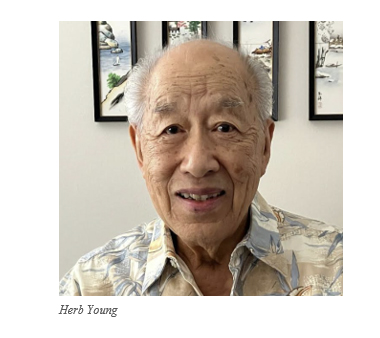 Herb, a second generation Chinese American, was one of 12 children – he had four sisters and seven brothers. He’s now the oldest surviving sibling in his generation, however, he’s experienced several health issues over the years including a “missing heartbeat” which required a pacemaker, heart atrial fibrillation which required blood thinning medication, and undetected heart failure which resulted in edema (swelling of the legs and feet) which put him in the hospital for a few days.
Herb, a second generation Chinese American, was one of 12 children – he had four sisters and seven brothers. He’s now the oldest surviving sibling in his generation, however, he’s experienced several health issues over the years including a “missing heartbeat” which required a pacemaker, heart atrial fibrillation which required blood thinning medication, and undetected heart failure which resulted in edema (swelling of the legs and feet) which put him in the hospital for a few days.
Herb said this is the first time in 90 years that he’s had to be on a special diet. “You may frown upon this,” he said to Deb, “but I love fast foods and processed meats so much!” Apparently, Herb’s been reading our newsletter’s ‘Health’ section.
Herb is a U.S. Navy vet, having served between 1951 and 1955 near the end of the Korean War. “I was a Personnel Specialist, stationed at the Naval Air Station in Alameda, CA,” he said. Shortly after he was honorably discharged, he met his wife Jane and was married a year later. Together they have three children, seven grandchildren, and one great grandchild.
Herb was diagnosed with prostate cancer in 2002. His doctor suggested several treatment options including photon radiation and brachytherapy but advised him not to have surgery because “the side effects might not be good for a 71-year-old.”
Lucky for Herb, his niece’s husband had gone through proton therapy at LLUCC about five years prior and was doing well. “I felt that was the way to treat my prostate cancer, so I didn’t do any research after that,” said Herb. “My subsequent PSA tests have been low and stable.”
Herb was excited to win the BOB Tales brain teaser contest last month and to receive his signed copy of Bob’s book. “I have the first edition and was planning to order the new edition, but I hadn’t gotten around to it. Retired folks like me tend to put things off.” Herb also said he enjoys reading the BOB Tales newsletters.
“I’m blessed that I’ve survived all my health issues so far,” Herb said. “I have just nine years to go before I get to ‘Highway 100. ’”

New Brain Teaser
Place the numbers: 1, 2, 3, 4, 5, 6, 7, 8, 9, one in each box so that all rows, columns and diagonals add up to different totals.

Send your brain teaser answer to [email protected] for a chance to win a signed copy of Bob Marckini’s NEW second edition book, You Can Beat Prostate Cancer.

Letters to God
A grade-school teacher asked her class to write a note to God. Here are a few examples of what she received:
- Dear God – Are you really invisible or is that just a trick? ─Lucy
- Dear God – Did you mean for giraffes to look like that or was it an accident? ─Norma
- Dear God – I went to this wedding, and they kissed right in church. Is that okay? ─Tommy
- Dear God – I’m American. What are you? ─Robert
- Dear God – Thank you for the baby brother, but what I prayed for was a puppy. ─Joyce
- Dear God – Please put another holiday between Christmas and Easter. There’s nothing good in there now. ─Ginny
- Dear God – Maybe Cain and Abel wouldn’t hate each so much if they had their own rooms. It works with my brother. ─Larry
- Dear God – I want to be just like my daddy when I get big, but not with so much hair all over. ─Sam
- Dear God – I think the stapler is one of your greatest inventions. ─Ruth
- Dear God – I bet it’s hard for you to love everybody in the whole world. There are only four people in my family, and I have a hard time. ─Nan
- Dear God – I’d like to live 900 years like the guy in the Bible. ─Chris
- Dear God – We read that Thomas Edison invented light. But in Sunday school they said you did it. So, I bet he stole your idea. ─Dennis
And our favorite:
- Dear God – Instead of letting people die and having to make new ones, why don’t you just keep the ones you got now? ─Richard

Sharp Police Officer
Police aren’t perfect, but this cop comes close to winning the ingenuity award.
A driver did the right thing – he stopped at the school crosswalk even though he could have beaten the red light by accelerating through the intersection.
The tailgating woman behind him went ballistic! She pounded on her horn and screamed in frustration because she missed her chance to drive through the intersection with him. Still in mid-rant, she heard a tap on her window and looked up into the face of a very serious police officer.
The officer ordered her to exit her car with her hands up. He took her to the police station where she was searched, fingerprinted, photographed, and placed in a cell. After a couple of hours, a policeman approached the cell and opened the door. The woman was escorted back to the booking desk where the arresting officer was waiting with her personal effects.
He said, “I’m awfully sorry for my mistake, Ma’am. You see, as I pulled up behind your car while you were blasting your horn, flailing your arms, and cussing a blue streak, on the back of your car I noticed the “What Would Jesus Do” license plate holder, the “Follow me to Sunday School” bumper sticker, the chrome-plated fish emblem on the trunk, and the “My Boss is a Jewish Carpenter” decal on your back window. So, naturally, I assumed you’d stolen the car.”

Appreciation
Thanks for teaching me the meaning of the word, “plethora.” It means a lot.


Strange but True Facts (Source)
A meteor exploded over earth with the force of 10 atomic bombs and everyone missed it.
You’d think if a spacial body met a phenomenally fiery fate right above our heads, we’d notice. But when a meteor hit our atmosphere on Dec. 18, 2018, and exploded with a force that was 10 times the energy of the Hiroshima atomic bomb, it wasn’t discovered by NASA scientists until after the fact. Turns out, it went largely undetected because it took place in a remote area of the Bering Sea.
Green Eggs and Ham started as a bet.
The Dr. Seuss classic grew out of a bet with his editor that he couldn’t create a book using fewer than 50 different words. The editor, Random House founder Bennett Cerf, put—you guessed it—$50 on the line and lost.
The Moon is slowing the earth’s rotation.
It’s true. Every 100 years, the moon adds 1.4 milliseconds to a day. While this is a very small amount of time, it adds up. In fact, when dinosaurs roamed the earth, days were 23 hours long, according to NASA.

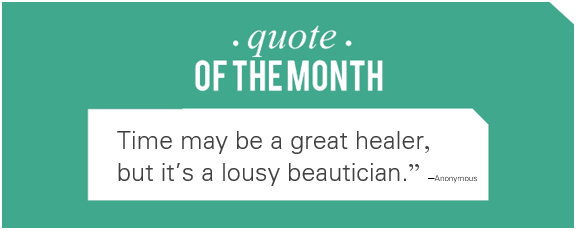


.gif)

'Lucky' (Source)
Mary and her husband Jim had a dog, Lucky. Lucky was a real character. Whenever Mary and Jim had company come for a weekend visit, they’d warn their friends to not leave their luggage open because Lucky would help himself to whatever struck his fancy. Inevitably, someone would forget and something would go missing. Mary or Jim would go to Lucky’s toy box in the basement and there the treasure would be, amid all of Lucky’s favorite toys. Lucky always stashed his finds in his toy box; and he was very particular that his toys stay in the box.
Soon, Mary learned she had breast cancer. Something told her she was going to die of this disease; she was sure it was fatal. She scheduled a double mastectomy, fear riding on her shoulders.
The night before she was to go to the hospital she cuddled with Lucky. A thought struck her … What would happen to Lucky if she died? Although the 3-year-old dog liked Jim, he was Mary’s dog through and through. If I die, she thought, Lucky will be abandoned. He won’t understand that I didn’t want to leave him. The thought made her sadder than thinking of her own death.
The double mastectomy was harder on Mary than her doctors had anticipated, and she was hospitalized for over two weeks. Jim took Lucky for his evening walk faithfully, but the little dog just drooped, whining and miserable. Finally, the day came for Mary to leave the hospital. When she arrived home, she was so exhausted she couldn’t even make it up the steps to her bedroom. Jim made his wife comfortable on the couch and left her to nap.
Lucky stood watching Mary, but he didn’t come to her when she called. It made Mary sad, but sleep soon overcame her. When Mary woke, for a second she couldn’t understand what was wrong. She couldn’t move her head and her body felt heavy and hot. But panic soon gave way to laughter when Mary realized the problem. She was covered, literally blanketed, with every treasure Lucky owned!
While she’d slept, the sorrowing dog had made trip after trip to the basement bringing his beloved mistress all his favorite things in life. He’d covered her with his love.
Mary forgot about dying. Instead, she and Lucky began living again, walking farther and farther together every night. It’s been 12 years and Mary is still cancer free. Lucky? He still steals treasures and stashes them in his toy box, but Mary remains his greatest treasure.
The people who make a difference in your life are not the ones with the most credentials, the most money, or the most awards. They’re the ones who care.
Low PSAs to all,
Bob Marckini and Deb Hickey
To print the BOB Tales newsletter or view the newsletter with a larger font size, click here for the PDF file.
NO MEDICAL ADVICE: Material appearing here represents opinions offered by non-medically-trained laypersons. Comments shown here should NEVER be interpreted as specific medical advice and must be used only as background information when consulting with a qualified medical professional.




